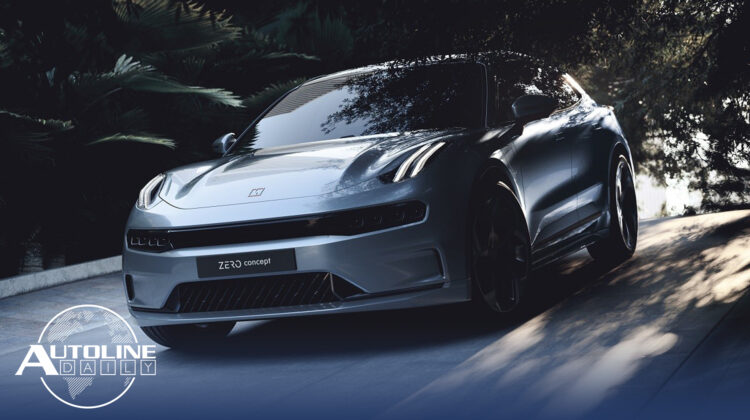
Listen to “AD #2980 – Lynk and Co Begins Zero EV Prototype Tests; VW Not Giving Up on Diesels; GM Creates 3D Printing Hub” on Spreaker.
Follow us on social media:
Runtime: 10:04
0:39 Biden Taps Buttigieg For Transportation Secretary
1:04 Hyundai Motor Appoints New Co-CEO
1:14 Bentley, Lamborghini & Ducati To Remain Part of VW Group
1:43 VW Not Giving Up on Diesels
2:13 Hottest Automotive Stocks
3:13 GM Creates 3D Printing Hub
4:33 Lynk & Co Begins Zero EV Prototype Tests
5:15 Chevy Teases Bolt EUV Lighting
5:42 EVs Will Be as Affordable as ICE Vehicles In A Few Years
6:53 Toyota Mirai U.S. Details
7:21 Bosch’s Vehicle Computer Sales Surge
8:02 Volvo V60 Impressions
Visit our sponsors to thank them for their support of Autoline Daily: BorgWarner; Bridgestone, Hyundai and Intrepid Control Systems.
This is Autoline Daily, the show dedicated to enthusiasts of the global automotive industry.
BIDEN TAPS BUTTIGIEG FOR TRANSPORTATION SECRETARY
Here’s a couple of names in the news. President-elect Joe Biden is busy filling out his cabinet and yesterday he announced he’s nominating former South Bend mayor and Democratic presidential candidate, Pete Buttigieg to head the Department of Transportation. Biden has pledged to spend billions of dollars updating the nation’s infrastructure, including building more EV charging stations and other green projects.
HYUNDAI MOTOR APPOINTS NEW CO-CEO
And the other name in the news is Jaehoon Chang, who was named as the new co-CEO of Hyundai Motor. He had been the global head of the Genesis brand.
BENTLEY, LAMBORGHINI & DUCATI TO REMAIN PART OF VW GROUP
The Volkswagen Group’s massive investments in EVs and AVs led it to slash costs in other areas. But as of right now, that will not include selling off Bentley, Lamborghini or Ducati. There’s been plenty of speculation that they would go on the chopping block to raise capital, and it sure is possible that VW shopped the brands. But this week the board agreed to keep them. It also announced that Bentley will be merged into Audi.
VW NOT GIVING UP ON DIESELS
In other VW news, it may have darn near killed off diesel engines, but it’s still sticking with them. It recently upgraded its 2.0L diesel engine, which is used by many of the Group’s brands, to surpass Euro 6 emission standards. To reach that goal of no more than 80 grams of NOx per kilometer, VW slapped a second catalyst reduction system further down the exhaust. It’s particularly effective under high engine loads.
HOTTEST AUTOMOTIVE STOCKS
The hottest automotive stocks yesterday included the startup QuantumScape, which is working on solid state EV batteries. It was up $6.10 a share, or 10.9%. And Lydall, a company which makes thermal and acoustical materials, was up $16.09 or 10.9%. You may have never heard of Lydall before, but it’s been around since 1869.
GM CREATES 3D PRINTING HUB
General Motors is getting really bullish on 3D printing, so it established what it calls the Additive Industrialization Center to put all its 3D efforts into one organization. The AIC is evaluating different methods and materials that can be used in additive manufacturing. GM has been testing 3D parts on its Corvette race cars, and will put some parts into production on the Cadillac CT4 and CT5-V, including HVAC ducts, a wire harness bracket and the shift knob for the manual gearbox. The biggest advantage of using 3D printing is that engineers can try out different design iterations quickly and cheaply, since there is no tooling that needs to be made. For example, the brake ducts on the Corvette C8.R went through 4 different design changes and the final design was 64% cheaper, took only one week to make instead of 10 weeks, and suffered zero failures. The Hummer EV battery pack was developed with some 3D parts that took 50% less time to make and were 58% cheaper. GM is also using 3D printing to make production tools at its assembly plants. While most of its efforts so far involved plastic parts, it’s also developing new metal alloys to print even more kinds of parts.
LYNK & CO BEGINS ZERO EV PROTOTYPE TESTS
Geely’s Chinese brand Lynk & Co showed off its first EV back in September and less than 3 months later has already started pre-production prototype testing. The Zero EV, as it’s now called, rides on the Group’s new Sustainable Experience Architecture, which will also be used by Volvo and Polestar. The batteries, mounted in the floor, are said to return a 700-kilometer driving range. But that’s based on the NEDC test. It would likely have an EPA range of 300 miles. As you can see, it still looks similar to the concept with short front and rear overhangs and an SUV-like rear end.
CHEVY TEASES BOLT EUV LIGHTING
Chevy is once again teasing the upcoming Bolt EUV. This time it’s the electric vehicle’s signature lighting, which features a sequential front turn signal and LED daytime running light. As you can see, it’s much sleeker than the current Bolt’s headlights and has a bit of a hockey stick look. No word yet if the regular Bolt will adopt this but it wouldn’t surprise us. The Bolt EUV goes into production in the summer of 2021.
EVs WILL BE AS AFFORDABLE AS ICE VEHICLES IN A FEW YEARS
And here’s some good news for EVs. Bloomberg New Energy Finance predicts that shrinking battery prices will make EVs as affordable as ICE vehicles in just 3 or 4 years. Battery prices have gone down nearly 90% in the last 10 years and the average pack for a vehicle now sits at $126 per kWh. By 2023, that will reach $100 per kWh, which Bloomberg sees as the tipping point. And even if prices for raw materials go back up, it will only delay that timeline by a few years because solid-state batteries are expected to start coming into the market. They’re also expected to drag battery prices down, which could be as low as $58 per kWh by 2030.
TOYOTA MIRAI U.S. DETAILS
We’ve already reported on the new Toyota Mirai, but here’s a few specs for the U.S. market that we didn’t have before. The EPA-estimated range comes in at 402 miles, which is a 30% improvement over the last car. It will carry a starting price of a little under $50-grand, more than $9,000 less than before. And every one sold or leased, will come with up to $15,000 in free hydrogen.
BOSCH’S VEHICLE COMPUTER SALES SURGE
Cars are becoming more and more sophisticated and are being equipped with more computers to help run all those systems. And this growth is helping to boost the supplier Bosch’s bottom line. Since last year, the company has won orders for vehicle computers worth more than $3 billion. To help meet demand, it created a new unit that starts operations next month, which will combine its hardware and software engineering for vehicle computers, sensors and control units. And this business won’t slow anytime soon, according to McKinsey, software’s share in the value of a vehicle will rise from 10% today to 30% in the future.
VOLVO V60 IMPRESSIONS
Every automaker in the U.S. has seen sales drop this year, with one exception…Volvo. While its sales are barely up compared to last year, in November they surged 36% on a daily selling rate basis, according to Wards Intelligence. And after the V60 wagon rolled through the Autoline Garage, it’s easy to see why the company has kept its head above water during the pandemic. While the styling isn’t flashy, it’s tastefully done and features a nice premium look. The interior is minimalist with very few buttons in the center stack, most functions are controlled through the 9-inch touchscreen, steering wheel controls or voice command. The V60 we drove is powered by a 2.0L turbocharged four-cylinder engine, an 8-speed automatic and all-wheel-drive. That setup is good for an EPA rated 25 MPG combined and it provides very good, get up and go when you need it. The V60 carries a starting price just over $45,000 but it comes with plenty of options and the one we test drove had a $57,290 price tag. It’s a good option for someone who needs a bit more room than a sedan but not interested in a crossover.
He teamed up with a guy named Darryl Hall. And he wrote smash hits like “I Can’t Go For That” and “Sarah Smile” and a whole bunch of others. John Oates is one of the best-known names in the music industry. He’s also a hard-core car nut, and he’s our guest on Autoline After Hours this Thursday. So join us for what promises to be a great show that mixes cars and music.
But that wraps up today’s show, thanks for watching and we’ll see you back here again tomorrow.
Thanks to our partner for embedding Autoline Daily on its website: WardsAuto.com

John McElroy is an influential thought leader in the automotive industry. He is a journalist, lecturer, commentator and entrepreneur. He created “Autoline Daily,” the first industry webcast of industry news and analysis.






